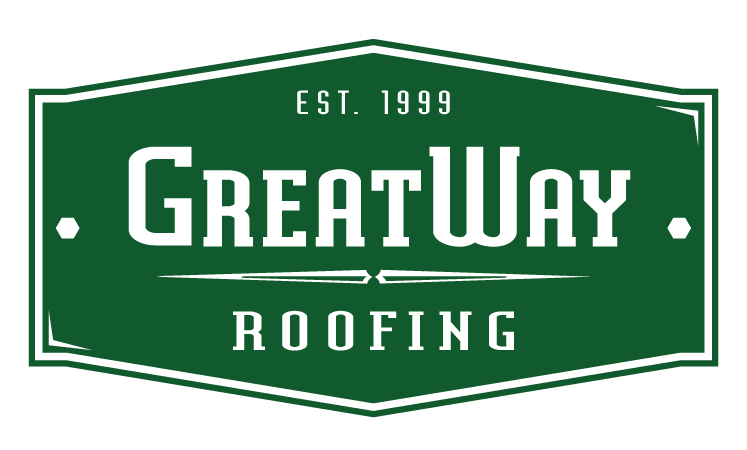Your roof is one of the most vital parts of your property, yet it often goes unnoticed until something goes wrong. It serves as the first line of defense against rain, wind, and sunlight, protecting everything below it—including your family, belongings, or business operations. Despite its critical role, roof maintenance is frequently overlooked, leaving property owners scrambling to fix problems that could have been avoided.
An annual roof maintenance plan offers a proactive, cost-effective way to extend your roof’s lifespan, prevent expensive repairs, and give you peace of mind. But what exactly is included in such a plan, and why is it worth the investment?
This comprehensive guide will walk you through every detail to help you understand the value of roof maintenance.
What’s Included in an Annual Roof Maintenance Plan?
An annual roof maintenance plan is more than a quick once-over. It’s a detailed, step-by-step service that ensures every aspect of your roof’s health is checked and maintained. Let’s break down the essential components:
1. Comprehensive Roof Inspection
A professional roof inspection is the cornerstone of any maintenance plan. This isn’t a casual glance at the roof—it’s a thorough evaluation of its condition, often using advanced tools and techniques to uncover hidden issues.
- What Roofers Look For:
- Shingles: Missing, curled, or cracked shingles are a common source of leaks.
- Flashing: Damage around chimneys, vents, and skylights often leads to water infiltration.
- Roof Decking: Signs of sagging or dips in the roof could indicate structural problems.
- Leaks and Moisture: Infrared cameras are sometimes used to detect hidden moisture inside the roofing system.
- Ventilation: Poor attic ventilation can lead to overheating, ice dams, and premature roof aging.
- Case Study:
A homeowner in Michigan noticed a small water stain on their ceiling and called for an inspection as part of their maintenance plan. The roofer discovered a cracked vent boot that had allowed water to seep in over time. The quick $150 repair saved the homeowner thousands in potential water damage to their attic and drywall.
2. Gutter Cleaning and Maintenance
Gutters are an essential part of your roof’s drainage system, directing water away from your home’s foundation. However, clogged or damaged gutters can lead to water pooling on your roof, causing leaks and structural damage.
- Key Services:
- Removing debris like leaves, twigs, and dirt.
- Flushing downspouts to ensure proper water flow.
- Inspecting for rust, cracks, or sagging sections.
- Securing loose gutters or re-aligning them for better drainage.
- Example:
In a commercial building in Florida, clogged gutters led to water pooling on a flat roof. Over time, this caused water to seep into the building, damaging ceiling tiles and electrical wiring. Regular gutter cleaning, included in an annual plan, could have prevented this costly repair.
3. Removal of Roof Debris
Leaves, branches, and other debris can accumulate on your roof, especially in areas with overhanging trees. This debris looks unsightly and can trap moisture, leading to mold, algae, and premature wear on roofing materials.
- Why It’s Important:
- Moisture from debris can accelerate roof aging.
- Algae and moss growth can weaken shingles and cause discoloration.
- Preventing excess weight on your roof reduces stress on the structure.
- Expert Tip:
If you live in a wooded area, consider trimming back tree branches that overhang your roof. This reduces debris accumulation and minimizes the risk of damage during storms.
4. Minor Repairs and Maintenance
A roof maintenance plan often includes minor repairs that address small issues before they escalate. These repairs might involve:
- Replacing missing or damaged shingles.
- Re-sealing flashings around chimneys and vents.
- Fixing small leaks or cracks in the roofing material.
- Tightening loose nails or screws.
- Financial Perspective:
According to the National Roofing Contractors Association (NRCA), addressing minor issues early can save homeowners up to 30% on long-term repair costs.
5. Roof Cleaning
Moss, algae, and lichen are not just cosmetic issues—they can degrade roofing materials and shorten the lifespan of your roof. Professional roof cleaning as part of a maintenance plan ensures your roof stays free from these harmful growths.
- Common Cleaning Methods:
- Low-Pressure Washing: Gentle cleaning for asphalt shingles to avoid granule loss.
- Chemical Treatments: Eco-friendly solutions to kill algae and moss without damaging the environment.
- Soft Brushing: Ideal for delicate materials like clay tiles.
6. Inspection of Roof Penetrations
Areas where your roof has been penetrated—such as chimneys, skylights, and vents—are common weak points for leaks. Regular inspections of these areas are crucial.
- What Roofers Check:
- Gaps or cracks around the penetration.
- Deteriorating sealants.
- Rust or corrosion on metal components.
- Real-World Impact:
A small gap around a skylight in a California home went unnoticed for years, eventually leading to extensive water damage. Regular inspections could have identified and sealed the gap before any damage occurred.
7. Ventilation and Insulation Check
Proper attic ventilation and insulation are key to maintaining a healthy roof. Poor ventilation can cause various issues, from overheating in summer to ice dam formation in winter.
- Inspection Includes:
- Checking attic vents for blockages or damage.
- Ensuring insulation levels meet energy efficiency standards.
- Identifying signs of moisture buildup or mold in the attic.
8. Detailed Maintenance Report
At the end of the service, you receive a comprehensive report outlining the roof’s current condition, any repairs made, and recommendations for future maintenance.
- Why It Matters:
These reports are valuable records for insurance purposes or when selling your property. A documented maintenance history can reassure potential buyers about the roof’s condition.
The Benefits of an Annual Roof Maintenance Plan
1. Prolongs Roof Lifespan
Roofing materials are designed to last decades, but neglecting maintenance can significantly shorten their lifespan. Regular care ensures your roof reaches or exceeds its expected lifespan.
- Example:
Asphalt shingles typically last 20–25 years. A homeowner in Ohio with a proactive maintenance plan extended their roof’s life to 30 years, avoiding an early replacement cost of $12,000.
2. Saves Money
The cost of an annual roof maintenance plan is minimal compared to the expense of major repairs or a full roof replacement.
- Statistics:
HomeAdvisor says the average roof repair costs $950, while a full replacement can range from $8,000 to $30,000.
3. Enhances Energy Efficiency
A well-maintained roof with proper ventilation and insulation helps regulate indoor temperatures, reducing your reliance on heating and cooling systems.
- Fact:
The U.S. Department of Energy estimates that proper attic insulation can save homeowners 10–50% on their energy bills.
4. Boosts Curb Appeal
A clean, well-maintained roof enhances your property’s appearance and can increase its value, especially if you plan to sell.
- Pro Tip:
If selling your home, provide maintenance records to reassure buyers about the roof’s condition.
5. Ensures Safety
Neglected roofs can pose serious safety risks, from falling debris to structural collapses. Regular maintenance keeps your property safe and secure.
6. Simplifies Insurance Claims
Many insurance policies require proof of regular maintenance to approve claims for roof damage. Maintenance plans provide the documentation you need.
DIY Maintenance vs. Professional Maintenance
While some tasks, like clearing light debris, can be handled by homeowners, professional maintenance offers advantages:
| Aspect | DIY Maintenance | Professional Maintenance |
| Tools & Equipment | Limited to household tools. | Advanced tools like drones and infrared cameras. |
| Expertise | Limited knowledge of roof systems. | Years of training and experience. |
| Safety | High risk of injury or falls. | Proper safety equipment and protocols. |
| Thoroughness | May overlook hidden issues. | Comprehensive inspections and solutions. |
How to Choose the Right Roof Maintenance Plan
Selecting the right roof maintenance plan is crucial to ensuring the longevity and performance of your roof. Here are some key considerations to guide your decision:
- Evaluate the Contractor’s Reputation: Look for roofing companies with strong credentials, such as licensing, insurance, and certifications. Read reviews, check ratings on trusted platforms, and ask for references from previous clients. A company with a proven track record will provide reliable service.
- Look for Comprehensive Coverage: A good maintenance plan should include all essential services, such as inspections, gutter cleaning, minor repairs, debris removal, and detailed reporting. Ensure the plan addresses the specific needs of your roof type, whether it’s shingle, tile, or metal.
- Consider Local Expertise: Choose a contractor familiar with your region’s climate. A local roofing company will understand how seasonal weather patterns—like heavy wind, rain, or intense sunlight—impact your roof and tailor maintenance plans accordingly.
- Prioritize Customization Options: Every roof is unique, so your maintenance plan should reflect that. Opt for plans that can be customized based on your roof’s age, materials, and specific vulnerabilities. For example, older roofs may require more frequent inspections, while newer roofs may benefit from specialized cleaning.
- Compare Pricing, but Focus on Value: While cost is an important factor, don’t simply choose the cheapest option. Look for a plan that offers a balance of affordability and comprehensive service. Remember, a well-maintained roof saves you more money in the long run by preventing costly repairs or premature replacement.
- Check for Additional Perks: Some companies offer added benefits, such as priority scheduling for emergencies, discounted repair services, or extended warranties. These extras can enhance the value of your maintenance plan.
- Verify Communication and Reporting: A quality contractor should communicate clearly and provide detailed maintenance reports after every visit. These reports document the condition of your roof and any work performed, offering peace of mind and useful records for insurance or resale purposes.
By taking the time to research and compare options, you can select a roof maintenance plan that fits your needs and budget while ensuring the long-term protection of your property.
Conclusion
Investing in an annual roof maintenance plan is one of the smartest decisions you can make as a property owner. It’s more than just a way to protect your roof—it’s a proactive step toward safeguarding your entire home or business. By addressing minor issues before they escalate, ensuring proper drainage and ventilation, and keeping your roof clean and secure, you can save money, extend your roof’s lifespan, and enjoy greater peace of mind.
Your roof works tirelessly to protect what matters most. Give it the care and attention it deserves with a comprehensive maintenance plan. Whether you’re a homeowner or business owner, partnering with a trusted roofing professional ensures your investment stays strong, safe, and ready to weather any storm.

